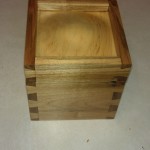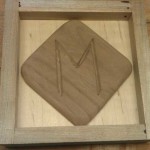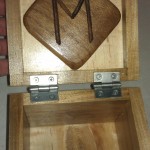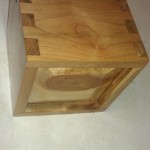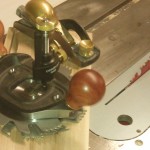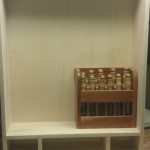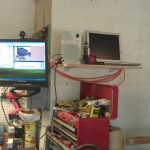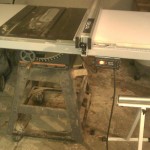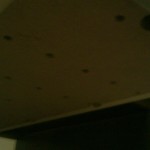 To try to bring more variety to my blog, and hopefully to help other newbie woodworkers make purchase decisions. Most, if not all, of the tools I will be reviewing have been purchased for my normal usage. However, on the very off chance someone sends me a tool to review, I will always indicate how I came by the tool I will be reviewing. I think it is only fair to you, the reader, should know where the tool came from. I will always try to minimize bias as much as possible. Also, please comment with your good and bad experiences about the tools I review here. This will make the review that much more useful for others out there.
To try to bring more variety to my blog, and hopefully to help other newbie woodworkers make purchase decisions. Most, if not all, of the tools I will be reviewing have been purchased for my normal usage. However, on the very off chance someone sends me a tool to review, I will always indicate how I came by the tool I will be reviewing. I think it is only fair to you, the reader, should know where the tool came from. I will always try to minimize bias as much as possible. Also, please comment with your good and bad experiences about the tools I review here. This will make the review that much more useful for others out there.
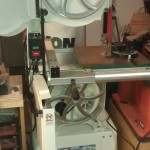 The first tool I am going to review is my band saw, specifically the Grizzly G0555P. I purchased this saw early Spring of 2011, so I have had it for around 2 years. Order and delivery were uneventful. I ordered lift gate service, however with my lack of understanding that freight works bit differently then package delivery, I took the day off work for the date the tracking website said it would arrive, not realizing the arrival date was not to my home, but rather to the freight depot. Not able to take another day off, I ended up driving up to the depot and picked the saw up from there. Other then skipping out on the lift gate services, the freight aspect went smooth.
The first tool I am going to review is my band saw, specifically the Grizzly G0555P. I purchased this saw early Spring of 2011, so I have had it for around 2 years. Order and delivery were uneventful. I ordered lift gate service, however with my lack of understanding that freight works bit differently then package delivery, I took the day off work for the date the tracking website said it would arrive, not realizing the arrival date was not to my home, but rather to the freight depot. Not able to take another day off, I ended up driving up to the depot and picked the saw up from there. Other then skipping out on the lift gate services, the freight aspect went smooth.
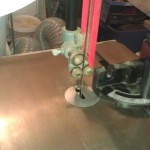 The saw and all of it components came well packed in one large box. Unpacking was straight forward, and each component was well protected. It did take two of us to lift the main saw out of the box. Assembly was not difficult, and took me a few hours. Most of the assembly was easily done by myself, but I did need some help lifting the main saw body on to the stand. The instructions for assembly were outstanding, and made assembly go smoothly. Tuning of the saw went well also. The instructions were very clear on this process as well. I will say, I did not use the blade that came with the saw. From what I have read, the stock blade was okay at best, and others had recommended going with a better blade. So I put a 1/4″ Timber Wolf blade on it, which has been the primary blade I have used on the saw. First time I powered up the saw I was amazed at how quiet and stable the saw was. It passed the nickel test with flying colors.
The saw and all of it components came well packed in one large box. Unpacking was straight forward, and each component was well protected. It did take two of us to lift the main saw out of the box. Assembly was not difficult, and took me a few hours. Most of the assembly was easily done by myself, but I did need some help lifting the main saw body on to the stand. The instructions for assembly were outstanding, and made assembly go smoothly. Tuning of the saw went well also. The instructions were very clear on this process as well. I will say, I did not use the blade that came with the saw. From what I have read, the stock blade was okay at best, and others had recommended going with a better blade. So I put a 1/4″ Timber Wolf blade on it, which has been the primary blade I have used on the saw. First time I powered up the saw I was amazed at how quiet and stable the saw was. It passed the nickel test with flying colors.
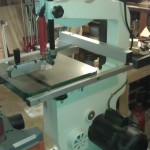 Overall, the fit and finish of the saw is excellent. The only real negatives I have about the saw is on the guide bearings, and the fence. Neither of them are truly bad. The complaint I have with the guide bearings is that they are noisy. They otherwise work fine, and do well with keeping the blade straight. The fence is okay for most straight cut operations. The lock handle is the main issue, as it sometimes doesn’t lock down as tight as it should. I now always give it an extra push down to make sure it stays in place. The fence adjustments for drift are not great.
Overall, the fit and finish of the saw is excellent. The only real negatives I have about the saw is on the guide bearings, and the fence. Neither of them are truly bad. The complaint I have with the guide bearings is that they are noisy. They otherwise work fine, and do well with keeping the blade straight. The fence is okay for most straight cut operations. The lock handle is the main issue, as it sometimes doesn’t lock down as tight as it should. I now always give it an extra push down to make sure it stays in place. The fence adjustments for drift are not great.
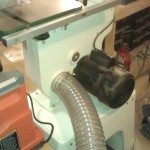 The saw has a single dust collection port in the back for a 4″ hose. This does an adequate job clearing the dust from the machine. Except for a little bit of dust left on the table after making a bunch of cuts, there is typically very little sawdust left in the saw itself.
The saw has a single dust collection port in the back for a 4″ hose. This does an adequate job clearing the dust from the machine. Except for a little bit of dust left on the table after making a bunch of cuts, there is typically very little sawdust left in the saw itself.
The actual use of the saw has been outstanding! Once everything was adjusted on a brand new blade, drift was virtually non-existent. I have even cut thick bowl blanks on it, and the saw cut right through them with no issue. In the two years I have been using it, has done everything I have expected of it, and never gave me an issue. All in all, if I had to do it over, I would have no complaints buying this saw again.
Full product specs here
As a note, I do not yet have the rise block or mobile stand for the saw. These will likely be future additions as I encounter the need for them.

